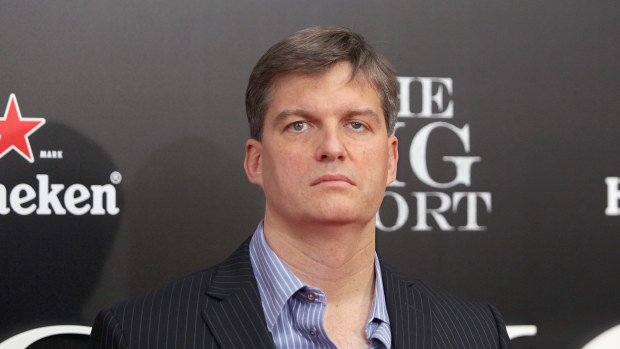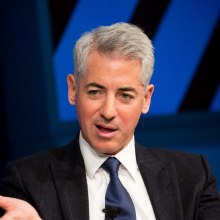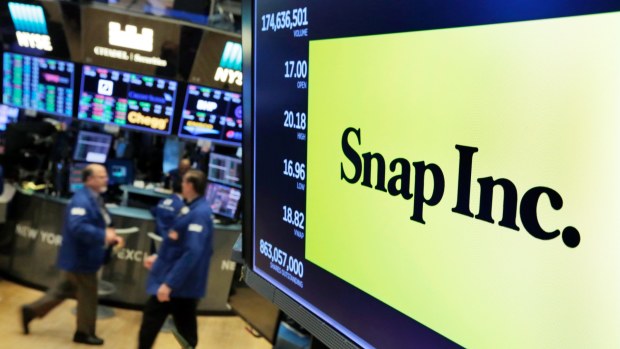...oh listen to Ackman, it wouldn't surprise me if he already has a large short position waiting, hoping and egging for a market crash that he can probably win big. And when he wins, he wins big. Or he loses big like with Netflix.
...fact is the Fed is in an unenviable no win corner. Yes, they erred badly calling inflation transitory and lost valuable time to nip it in the bud but Powell is terrified of what happened in Christmas 2018 and that experience scarred him...so he banged on hope while in the meantime Fed members were able to dispose of their assets in what was then considered conflict of interests. But he could still have done bigger and faster rate hikes to quickly finish the job rather than have this rate hike concern get more protracted. So in not wanting to crash the market by a swift 20pc down , his failure to instill market confidence saw the US market drifting 7 consecutive weeks unabated in a slow train wreck. And he has not even done his 50bps yet, let along worries about 75bps.
...what has happened is that American consumer sentiment is at a significant low, and with higher prices and losses from their investments and now concerns over possible recession, you can bet that they will further tighten their purse strings as they must now worry about their jobs next. So that's the first step of the decline. Advertising expenditure would be amongst the first to be reduced , which is why we saw those social media stocks like Snap, Meta and Alphabet suffering sharp losses. Then comes two months of rate hikes and higher mortgage repayments will create more financial stress while they adversely impact corporate margins and sales outlook, the second step of decline would involve staff layout, a reduction in hiring. Which is why my base case is that US would probably be in recession by the final quarter of this year , although the official data may not yet reflect it until mid 2023. But by then, we should already have had or will experience a sharper decline in the stock indices to be well below where they are at this point.
...US tech stocks are so way overvalued and so deviated from their underlying fundamental that it is no joke that their stock price could be wiped out by 90% from their peak...it just shows how much froth from speculation entered the US market in 2020-21. This possibly explains why our ASX is not as impacted because the indexed weighted stocks are not suffering from reversion to the mean froth but they suffer from a likely deterioration in their business outlook. But the froth in ASX stocks lie with the more speculative small to mid cap stocks that have gone into hundreds of millions or even billions in market cap but yet to deliver any cashflows to date. In other words, market participants who had purchased these stocks at or close to their peak were paying at values that should be derived much later when the stock is well into generating the cashflows that they were expected, and market participants holding then failed to realise that their stocks overshot their real underlying project value. For instance, why should a stock be trading well above their full project NPV valuation when they haven't even begun production and when those NPV projections could be too rosy based on assumptions prevailing 6-12 months ago when the business environment was not as challenging. You certainly won't have your management doing an update to lower their NPV (net present value) projection incorporating higher operating costs attributable to higher inflation. And that's the risk Buy the Dippers make when they always anchor their expectations that stock price must necessarily be cheap if they are 50% below their peak price.
And for the above reasons, this is why gold stocks at this point are not following gold price as closely as they did previous during the gold bull market rally. First, many gold companies under-deliver in their production guidance, secondly they suffer from a higher AISC cost as operating costs from oil to labour costs have spiraled higher and third, given the uncertainties, they tend to hedge their gold price for their sales hence placing a cap on benefits that can accrue from higher gold price.
Snap shows danger of ‘growth traps’ as Ackman warns worse to come
Snap might look cheap after its startling 43 per cent fall, but market heavyweights warn worse may be to come for growth stocks as inflation rages.
May 25, 2022 – 12.19pm
Well, that didn’t take long.
Just a day after JP Morgan chief executive Jamie Dimon gave investors hope that the “storm clouds” over the US economy could indeed dissipate, the startling 43 per cent plunge in the value Snap, cast a pall over investors that was compounded by worrying commentary from Big Short hero Michael Burry and hedge fund titan Bill Ackman.
Michael Burry says the market volatility is not fun to watch. WireImage
There’s something almost comical about the status that Burry’s infrequent tweets on the market have taken on; the fact he deletes them all almost immediately clearly adds to the mystique.
Tuesday night’s was a classic of the genre: “As I said about 2008, it is like watching a plane crash,” Burry said. “It hurts, it is not fun, and I’m not smiling.”
Ackman was a lot less cryptic as he accused the Federal Reserve of being asleep at the wheel and warned of a crash ahead.
“Inflation is out of control. Inflation expectations are getting out of control. Markets are imploding because investors are not confident that the @federalreserve will stop inflation. If the Fed doesn’t do its job, the market will do the Fed’s job, and that is what is happening now,” Ackman declared.
Bill Ackman says the Fed is losing the fight against inflation. Michael Nagle
“Current Fed policy and guidance are setting us up for double-digit sustained inflation that can only be forestalled by a market collapse or a massive increase in rates. That is why I believe there are no buyers for stocks.”
There certainly weren’t many buyers for Snap shares on Tuesday night which share price fall helped drag down Wall Street with it.
But at the risk of sounding terribly old and completely out of touch, the most surprising thing about the plunge isn’t that it could lose 43 per cent of its market capitalisation in a day but rather the fact it could still be worth $US21 billion ($29 billion) at the end of the carnage.
This is a social media site whose content - the messages and videos that users send - is designed to regularly disappear, and which has struggled to gain users, attract advertisers and make any money.
Snap is still worth $29b at the end of the carnage. AP
Based on its maiden quarterly profit of just $US23 million announced in February, Snap is still valued at about 250 times earnings after its implosion. That’s down from 391 times a day earlier.
While investors can debate the broader market relevance of the stock, certainly investors were spooked by chief executive Evan Spiegel’s warning the company faces “rising inflation and interest rates, supply chain shortages and labour disruptions, platform policy changes, the impact of the war in Ukraine” and “the macroeconomic environment has deteriorated further and faster than anticipated”.
Advertising-dependent social media stocks plummeted, wiping a combined $US165 billion ($233 billion) from the value of Facebook-owner Meta, Google-owner Alphabet, Twitter and Pinterest.
But Snap’s warning of a sudden deterioration in the US economy will reverberate beyond that, given last week’s big falls in retailers including Target and Walmart, who reported profitability under pressure from rising costs and slowing spending on goods.
‘Growth traps’ versus ‘value traps’
Still, not everyone is deterred by Snap’s historically ugly day. Bank of America analyst Justin Post cut his financial forecasts and target price for Snap, but pointed out the stock now looks very cheap, trading on four times 2023 revenue, compared to Snap’s five-year average of 11 times. BofA retains its ‘buy’ on the stock.
Herein lies one of the great challenges of the tech stock wreck that is unfolding on global markets. While the share prices of many of these companies have obviously changed dramatically, their fundamentals often haven’t - in many cases user numbers, market share and underlying tailwinds such as digitisation are all intact.
With tech stocks now trading well below historical averages, could they now represent good value?
For Ben Inker, co-head of asset allocation at Jeremy Grantham’s investment firm GMO, that’s a temptation to be resisted. In his latest quarterly letter, published on Tuesday night, he argues ‘growth traps’ can be even more dangerous than the ‘value traps’ that most investors are familiar with.
Inker uses a common definition for growth traps and value traps, describing it as a stock in either category “that both disappointed on revenues in the last 12 months and saw its future revenue forecast decline as well.”
Typically, these traps have been more associated with value investors, who focus on undervalued stocks; they fall in love with a stock that looks cheap, only to see it get even cheaper as its share price falls.
But Inker argues that traps are actually more prevalent in the world of growth stocks. “In a typical year, about 30 per cent of stocks in the MSCI US Value index turn out to be value traps, and they underperform that index by 9 per cent on average,” Inker says.
“But what seems to be somewhat less well known is that growth traps are both more common and more painful than their value brethren, with a prevalence of about 37 per cent of the MSCI US Growth index and an underperformance of 13 per cent on average.”
In the last 12 months, growth traps have performed even worse, “underperformed the growth universe by 23 per cent, a worse showing than any 10-month period they experienced, even during the bursting of the internet bubble, and worse than in any 10-month period in the 26 years we have the revenue forecast data necessary to define growth traps to begin with.”
To Inker’s credit, he warned about growth traps 10 months ago and steered clients away from them. So while there’s a touch of the victory lap about his latest missive, there’s always a new warning worth heeding: growth traps aren’t going away.
That might sound pretty obvious given the pressure on tech stocks we continue to see. But Inker points out that while long-term earnings growth forecasts for growth stocks have plummeted since the start of the year, “those forecasts are as high as they were at the peak of the internet bubble in 2000.”
In addition, growth stocks are still trading at a higher-than-normal premium to growth value stocks. “When growth stocks trade at a higher-than-normal premium to value stocks, the underperformance of growth traps is more extreme,” Inker says.”
Today, growth is trading about 2.3 standard deviations more expensive than normal relative to value. Absent a near-term collapse in growth stocks relative to the market, we will probably remain vulnerable on this measure for some time to come.”
Ackman and Burry would agree.
- Forums
- ASX - General
- Its Over
Its Over, page-12810
-
- There are more pages in this discussion • 10,289 more messages in this thread...
You’re viewing a single post only. To view the entire thread just sign in or Join Now (FREE)
Featured News
Featured News
The Watchlist
MTL
MANTLE MINERALS LIMITED
Nick Poll, Executive Director
Nick Poll
Executive Director
SPONSORED BY The Market Online







